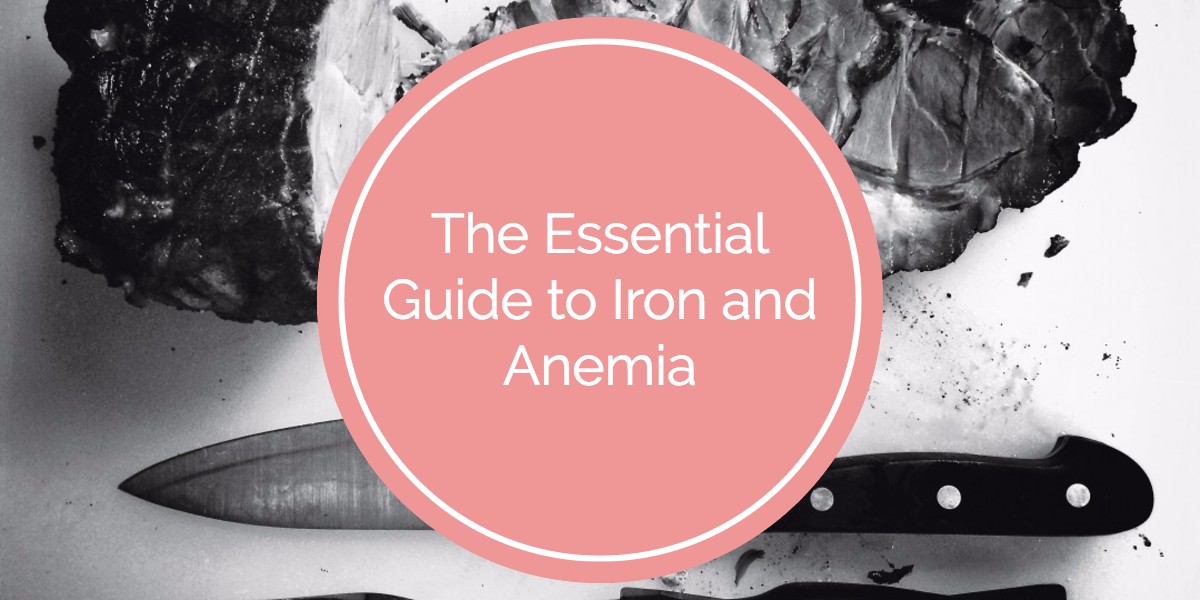
Iron deficiency is the most widespread nutritional deficiency in the world. The World Health Organization estimates that 2 billion people (over 30% of the world’s population) are anemic, most of which due to iron deficiency [1]. So why is iron so important? What should you do to make sure you consume enough of it?
Iron is an essential mineral (meaning that this mineral is required for the body to function normally and that it must be obtained from a dietary source). It is used in hemoglobin to transport oxygen to the cells. However, among the many essential minerals like calcium, sodium, zinc, iron has a unique place: it is very difficult for the body to regulate its consumption [2]. This means that unlike calcium, for example, which is excreted in the urine, excess iron may remain in the body.
This makes iron a double-edged sword. Don’t absorb enough of it, and you risk anemia, which can lead to a range of problems from fatigue to death. Absorb too much, and you increase your risk of hemochromatosis, colorectal cancer, heart disease, infection, neurodegenerative disorders and inflammatory conditions [3]. Excess iron can have negative effects because iron is a pro-oxidant (the opposite of antioxidant which are great for you). Pro-oxidants may induce oxidative stress and DNA damage (and may explain why meat consumption has been tied to breast cancer risk, as meat is high in iron). Several other conditions that are have been associated with high iron intake include Alzheimer, Parkinson, arthritis, and diabetes, but more research is needed to understand how these diseases are connected to iron.
So where should we get iron from?
There are two forms of iron in food: heme and non-heme.
Heme iron is only found in animal-based foods (about 40% of the iron in meat, poultry and fish is heme). It is typically absorbed better than non-heme iron. However, our digestive system cannot regulate heme iron at all, and it is easy to over-consume it whether we need it or not [4].
Non-heme iron is found in both animal-based and plant-based foods (100% of the iron in plants is non-heme and about 60% of the iron in meat, poultry and fish). Non-heme iron can be regulated by our digestive systems. Thus, if our iron stores are low, our intestines enhance its absorption. If our iron stores are too high, our intestines block non-heme iron absorption to maintain us in the healthy range. Therefore, non-heme iron is typically safer for consumption.
The best sources of non-heme iron are legumes (the best ones are soybeans, lentils, tofu, chickpeas and beans – in this order), dried leafy greens (the best ones are Swiss chard, turnip greens and beet greens), nuts and seeds (the best ones are pumpkin seeds and whole sesame paste. The later is packed with 2.4 milligrams of iron in only one tablespoon!). Contrary to common believe, spinach is not a good source of iron. Spinach is indeed rich in iron, but it also contains iron absorption-inhibiting substances: so Popeye tricked us all this time! Oh yeah, and great news, dark chocolate and cocoa powder are other good sources of non-heme iron.
We recommend consuming at least two servings of legumes daily (beans, lentils or peas). There are many other good reasons to eat legumes, as legumes are one of the things most 100-year olds have in common and seem to be highly correlated with longevity. In addition, we recommend at least one handful of nuts and/or seeds and no more than one serving of meat a day to avoid overconsumption of iron.
How can I improve iron absorption?
The most important factor in absorbing iron is vitamin C, so you should complement your meals with vitamin C-rich foods (such as citrus fruit, berries, tropical fruit, peppers, cauliflower and other green leafy vegetables like broccoli, kale, collards, Swiss chard and Brussels sprouts).
In one study, researchers gave patients 500 mg of vitamin C twice a day after meals. They concluded that vitamin C is more effective at increasing iron status than supplements [5]. In another study researchers found a drastic improvement in anemia only by adding 100 mg vitamin C at both lunch and dinner [6].
On the other hand, there are foods that impair iron absorption. These include dairy products and milk, coffee, black and green tea [7]. So try and avoid these with your iron-rich meals.
What about vegetarians and vegans?
Vegetarians and vegans are considered to be a risk group for anemia [8]. If you belong to this group, you should be make sure to consume foods that are high in iron and vitamin C (see above).
Here is a list of good sources of iron for vegans and vegetarians:
Is it worthwhile taking iron supplements?
Only people with a confirmed diagnosis of iron-deficiency anemia should consider using supplements, and even then it can be risky. A recent study found a significant increase in oxidative stress within the bodies of women on iron supplements [9]. So before going on supplements, talk to your physician about trying to treat it through diet alone, by eating lots of healthy foods rich with iron and vitamin C mentioned throughout this post.
Download Nutrino to get healthy personalized meal plans and a healthy dose of iron.
Other sources
- National Institute of Health
- Statistics about anemia by Anemia.org
- 8 Ways to Increase Iron Your Iron Levels – Health Ambition
- Risk associated with iron supplements by Dr. Michael Greger and NutritionFacts.org (video)
References
[1] World Health Organization on micronutrient deficiency
[3] Geissler C, Singh M. Iron, meat and health. Nutrients. 2011 Mar; 3(3):283-316.

